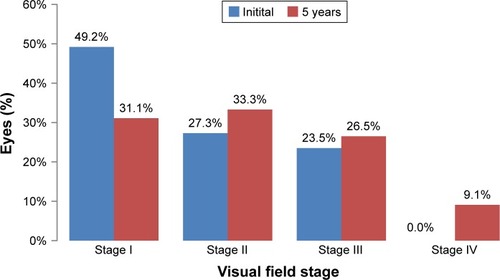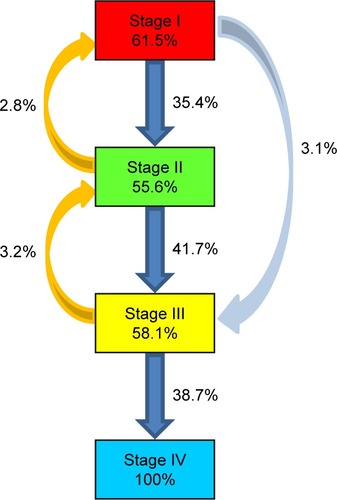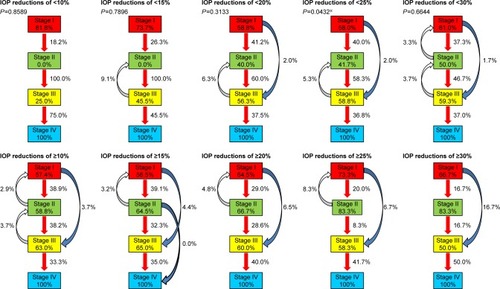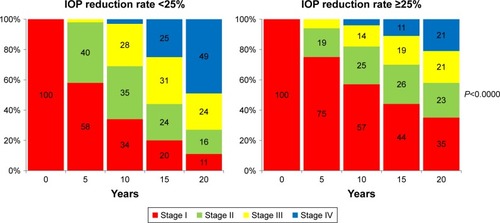Figures & data
Table 1 Patient characteristics
Table 2 Patient IOP and visual field data
Figure 1 Visual field stages and courses.

Figure 2 Transitions of visual field stages determined using a Markov model.

Table 3 MD slope value by IOP reduction rate at 5 years
Figure 3 Associations between visual field stage transitions and IOP reductions.
Abbreviation: IOP, intraocular pressure.

Figure 4 Simulation of visual field stage transition in the groups with IOP reduction rate of <25% and ≥25%.
Abbreviation: IOP, intraocular pressure.

